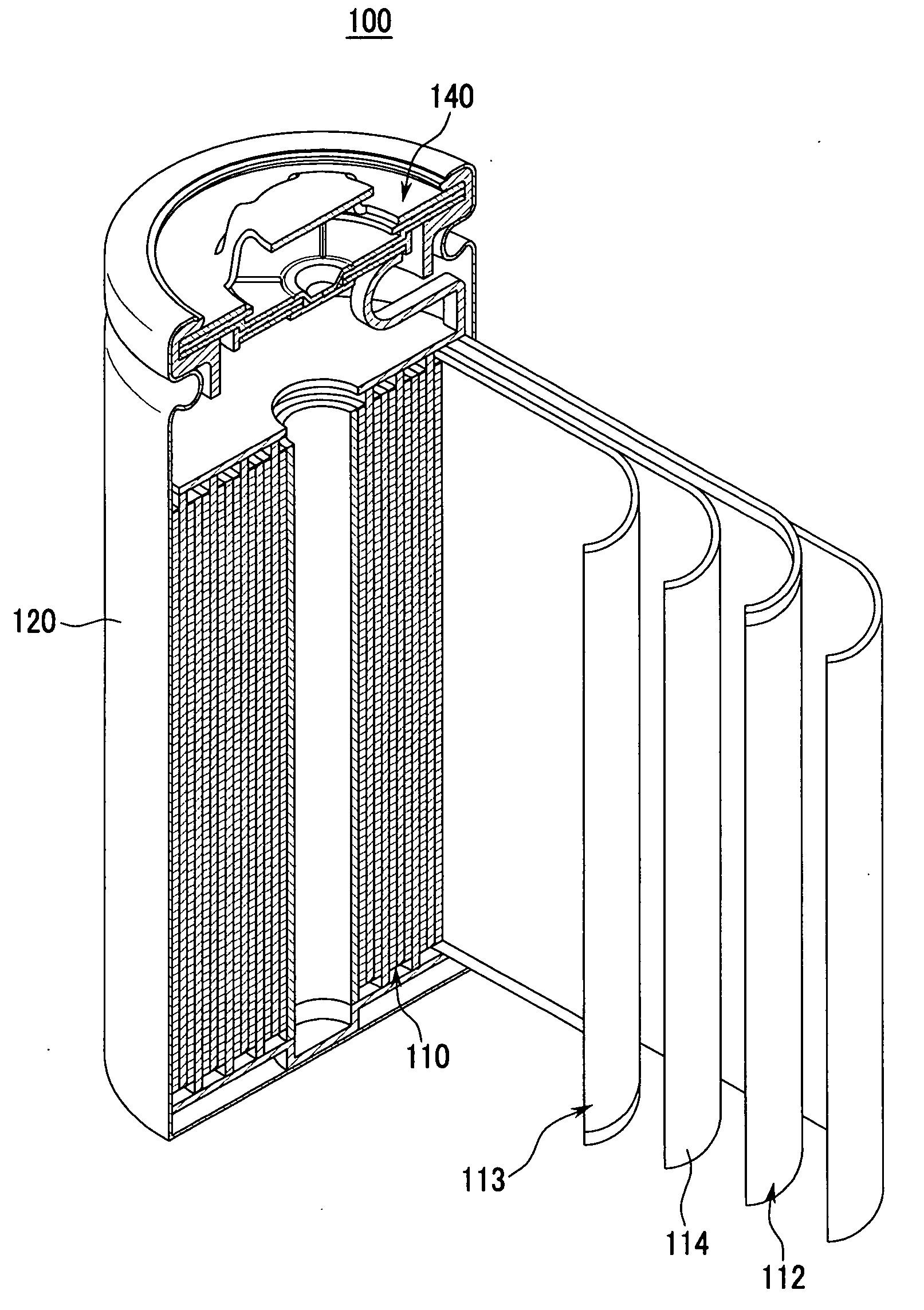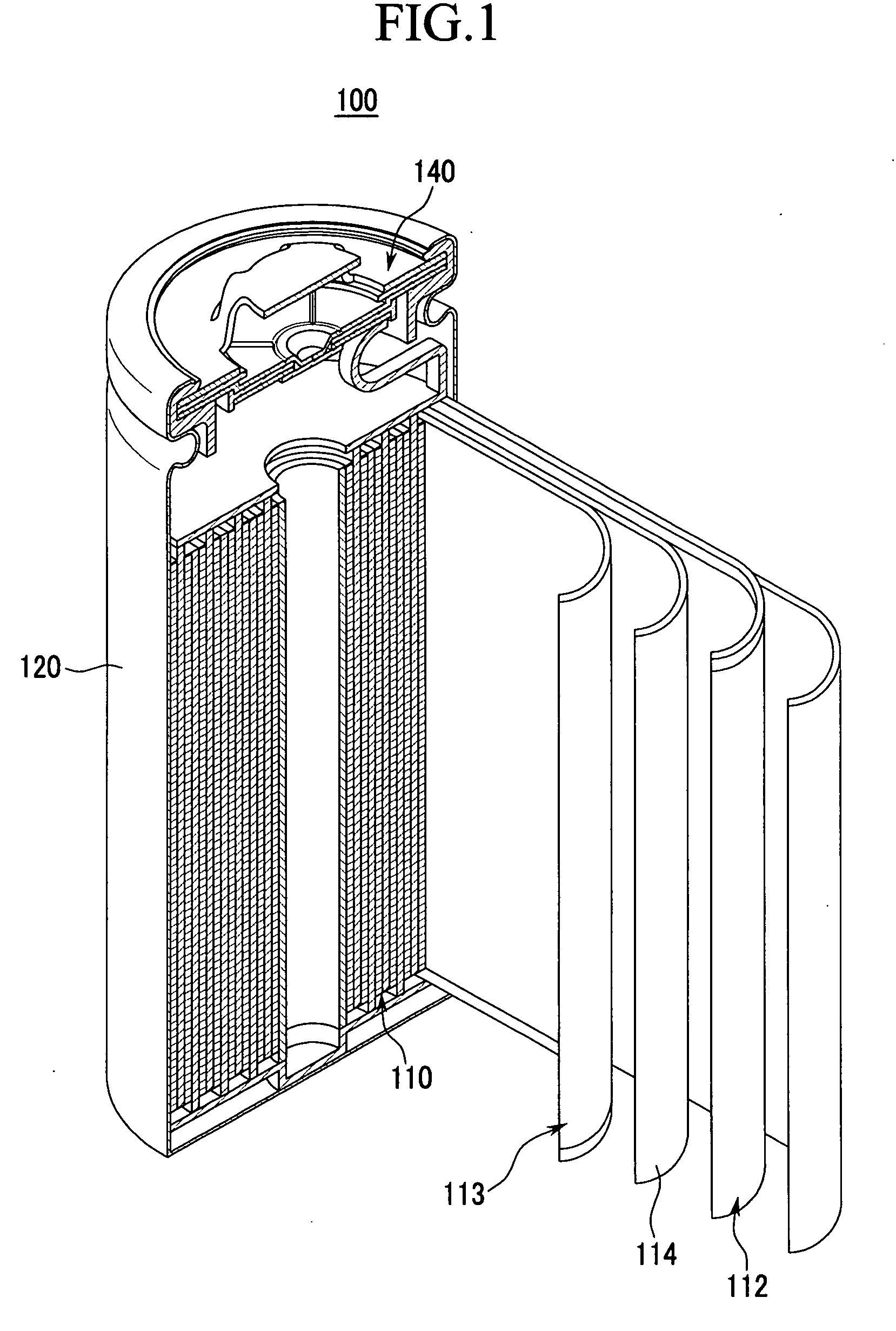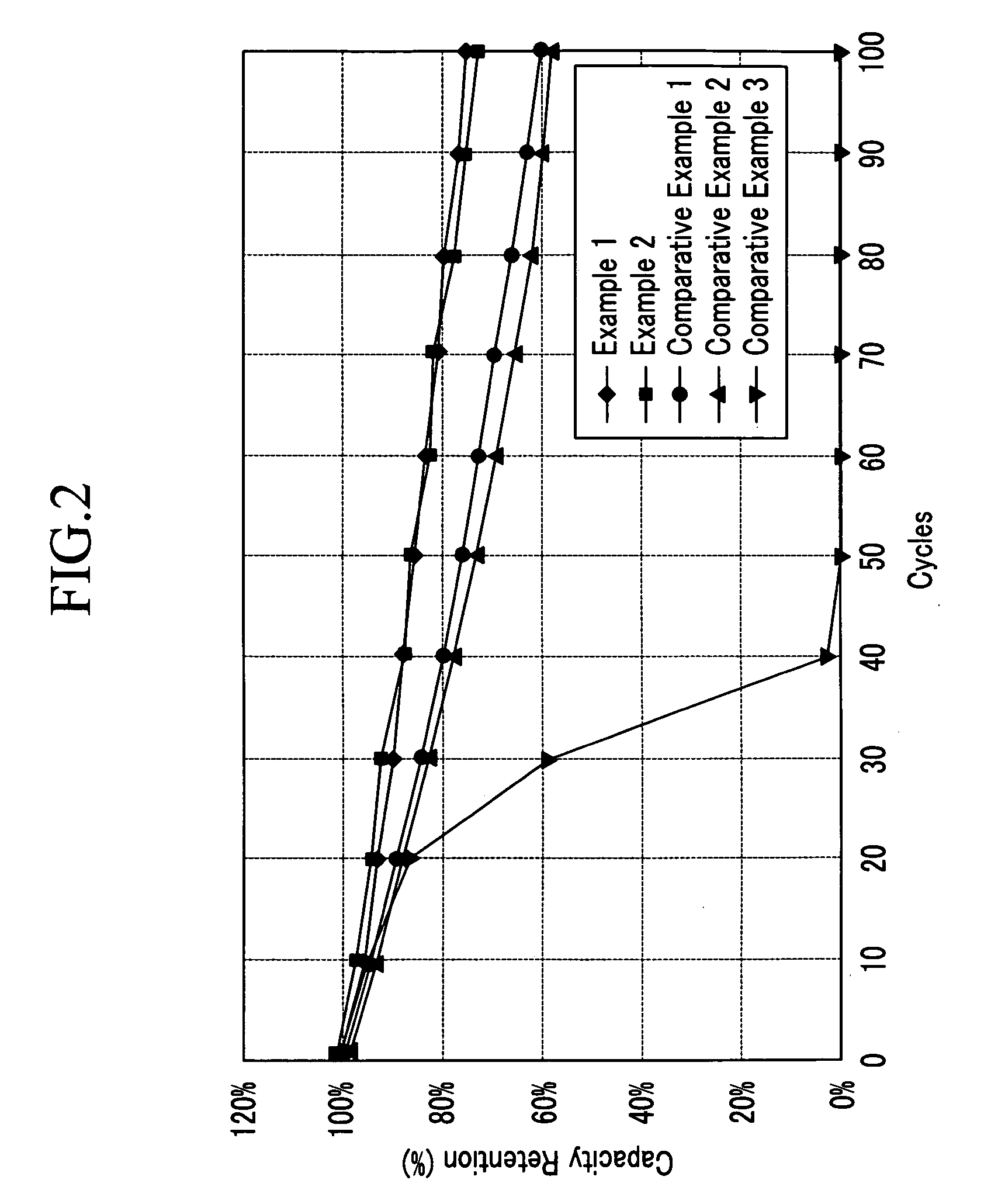Rechargeable lithium battery
a lithium battery, rechargeable technology, applied in the direction of non-aqueous electrolyte cells, cell components, electrochemical generators, etc., can solve the problems of lithium metal explosion, short circuit of batteries, substantial non-reversibility, etc., and achieve excellent reliability and cycle-life characteristics.
Active Publication Date: 2010-06-24
SAMSUNG SDI CO LTD
View PDF5 Cites 25 Cited by
- Summary
- Abstract
- Description
- Claims
- Application Information
AI Technical Summary
Benefits of technology
[0021]The rechargeable lithium battery constructed as one of embodiments of the present invention may have excellent reliabi
Problems solved by technology
Lithium metal has been contemporarily used as a negative active material, however, the lithium metal may form dendrites and thereby may cause a battery short-circuit.
Such battery short-circuit may cause an explosion of a battery having the lithium metal.
Even though the amorphous carbon has large capacity, a problem of substantial non-reversibility occurs during charge and discharge.
The graphite has high capacity because the graphite has a theoretical capacity limit of 372 mAh/g, however, the graphite has severely deteriorated cycle-life.
Even though the graphite or carbon-based active material has comparatively high theoretical capacity (a limit of 372 mAh/g), the graphite or carbon-based active material cannot be used for the aforementioned negative electrode of a desirable high-capacity lithium battery because the theoretical capacity of the graphite or carbon-based active material is not higher than 380 mAh/g.
The pure silicon however has deteriorated cycle characteristics compared with a carbon-based material, therefore, the pure silicon has not yet been successfully used to manufacture of the lithium battery.
The reason of failing to use silicon in forming the lithium battery is that, a mineral particle such as silicon or tin may have change of volume during charge and discharge o
Method used
the structure of the environmentally friendly knitted fabric provided by the present invention; figure 2 Flow chart of the yarn wrapping machine for environmentally friendly knitted fabrics and storage devices; image 3 Is the parameter map of the yarn covering machine
View moreImage
Smart Image Click on the blue labels to locate them in the text.
Smart ImageViewing Examples
Examples
Experimental program
Comparison scheme
Effect test
 Login to View More
Login to View More PUM
 Login to View More
Login to View More Abstract
A rechargeable lithium battery includes an electrolyte including an additive such as an ethylene carbonate-based compound represented by Chemical Formula 1 and a silicon-included compound, and a negative electrode including a negative active material including an active element selected from the group consisting of Si, Sn, Ga, Cd, Al, Pb, Zn, Bi, In, Mg, and Ge.
In Chemical formula 1, X and Y are independently selected from the group consisting of hydrogen, a halogen, and a C1 through C5 fluoroalkyl, provided that at least one of X and Y is selected from the group consisting of a halogen and a C1 through C5 fluoroalkyl.
The rechargeable lithium battery has a suppressed volume expansion characteristic due to a high-capacity negative active material, and has excellent reliability and cycle-life characteristics.
Description
CLAIM OF PRIORITY[0001]This application makes reference to, incorporates the same herein, and claims all benefits accruing under 35 U.S.C. §119 from an application for LITHIUM SECONDARY BATTERY earlier filed in the Korean intellectual Property Office on 22 Dec. 2008 and there duly assigned Serial No. 10-2008-0131318BACKGROUND OF THE INVENTION[0002]1. Field of the Invention[0003]The present invention relates to a rechargeable lithium battery, and more particularly, to an improved rechargeable lithium battery having excellent reliability and cycle-life characteristics attainable by inhibiting volume expansion caused by high-capacity negative active materials.[0004]2. Description of the Related Art[0005]Batteries include primary batteries which can be used only once and are then disposed of and secondary batteries which can be recharged and used repeatedly. Primary batteries include manganese batteries, alkaline batteries, mercury batteries, silver oxide batteries, and the like. Second...
Claims
the structure of the environmentally friendly knitted fabric provided by the present invention; figure 2 Flow chart of the yarn wrapping machine for environmentally friendly knitted fabrics and storage devices; image 3 Is the parameter map of the yarn covering machine
Login to View More Application Information
Patent Timeline
 Login to View More
Login to View More IPC IPC(8): H01M6/16
CPCH01M4/485H01M4/505H01M4/525Y02E60/122H01M10/0567H01M10/0568H01M10/0569H01M4/5825Y02E60/10H01M10/05H01M4/38H01M4/48H01M4/58
Inventor KIM, JIN-SUNGPARK, NA-RAEHAN, SU-HEELIM, JIN-HYUNK
Owner SAMSUNG SDI CO LTD
Features
- R&D
- Intellectual Property
- Life Sciences
- Materials
- Tech Scout
Why Patsnap Eureka
- Unparalleled Data Quality
- Higher Quality Content
- 60% Fewer Hallucinations
Social media
Patsnap Eureka Blog
Learn More Browse by: Latest US Patents, China's latest patents, Technical Efficacy Thesaurus, Application Domain, Technology Topic, Popular Technical Reports.
© 2025 PatSnap. All rights reserved.Legal|Privacy policy|Modern Slavery Act Transparency Statement|Sitemap|About US| Contact US: help@patsnap.com



